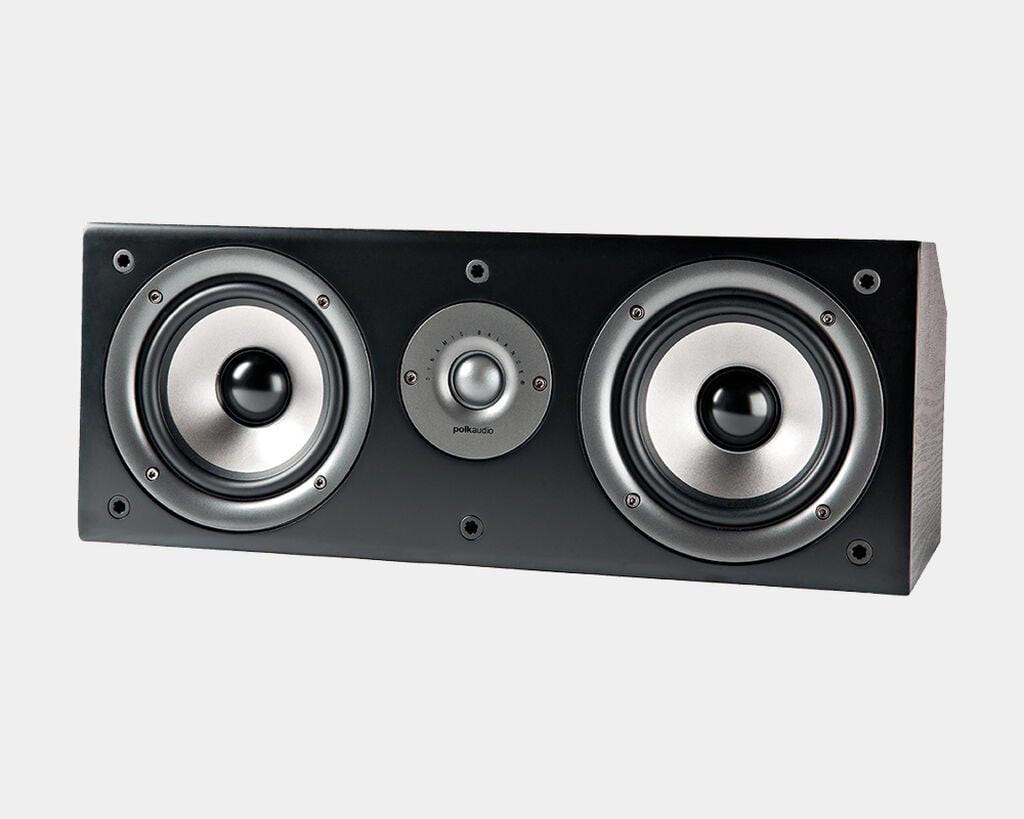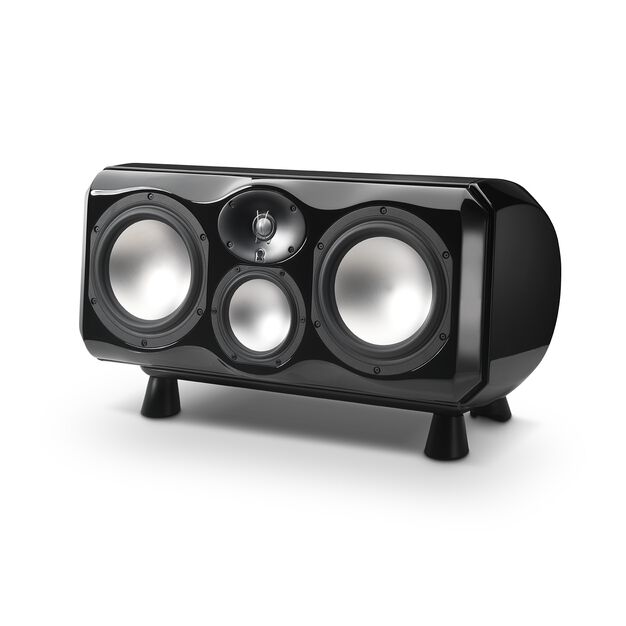Quote:
Originally Posted by GoinAllTheWay

Ha...what hasn't? Thanks for suggestion, I'll look into them. Looked at Wharfedale too, those may be a bit too pricey but will check em out. Any reason to stay away from Polk or Kef? My dad had a set of Polk Audi for his record players years back and always thought they sounded pretty good but they were used for Music.
|
KEF has some of the finest engineering the industry.
Quote:
|
Also....seems like a lot of purists snub their noses on dedicated center channels and suggest instead another bookshelf sitting upright for proper "sound orientation" What's everyones thoughts on that?
|
Just for some context, the kind of center speaker that you should probably avoid is this:

This is an M-T-M configuration. Additionally it has a lot of space in between drivers.
The reason for avoiding this is not elitism, but rather the way this kind of design interacts with your ears and the environment.
Our ears are most sensitive and discerning in the range between ~900hz and ~5kHz, give-or-take.
In the above configuration, you'll typically have the tweeter handling frequencies above ~2.5khz, and the midwoofers handling frequencies below that.
However, this handover between tweeter and woofer is not a brick wall cutoff. It's a gradual transition where the tweeter is still active as low as an octave below that crossover frequency (so as low as ~1.25khz) and the woofers are still active as high as an octave above that crossover frequency (so as high as 5khz)
Now factor in the following facts:
- midwoofers are not omnidirectional at higher frequencies. Individually they begin to beam sound even before they hand off to the tweeter.
- The woofers are not indivudal either way, and will be out of acoustic phase with each other causing sound wave cancellations. They are way too far apart for these frequencies they are responsible for.
- the woofers at some point will fall out of phase with the tweeter as well. You can match acoustic phase on the listening axis, but not on every axis unless the center to center distance is less than a quarter of the wavelength at that frequency
- we have two ears, which are in different locations horizontally, but the same height vertically
- One of the keys to a natural sounding speaker in a room is having an even distribution of horizontal frequency response (often referred to as polar response) on sound from the first and second earliest reflection (roughly 60-75 degrees off-axis horizontally)
- reflections from floors and ceilings are less easily able to be discerned by our auditory systems. Simply put we as a species haven't evolved that as well as we have horizontal listening skills.
- One of the keys to having a wide listening sweet spot is a consistent frequency response within the listening window (+- 30 degrees horizontlaly, +/- 15 degrees vertically)
Now that MTM design above, when placed horizontally, basically ignores every rule of good speaker design, and only exists because its form factor is convenient.
one superior design is the W-TM-W design:

It may look similar at first glance, but it is actually a very different (but pricier and more complex) design. The tweeter and midrange are oriented vertically and spaced tightly, so there are no or few horizontal cancellations in their active frequency range, which os the same range I noted as bring our most sensitive range. The small midrange also has more even off-axis response than a larger midwoofer would, never mind two larger midwoofers. The tweeter's response is also matched to the woofer through the use of an elliptical waveguide so the handoff between them is as inaudible as possible.
And while the two woofers are still unideally separated horizontally, their effective frequency range is lower, so the impact of their spacing is much less likely to affect either the listening window response or the off-axis reflected response.
of course, if your HT allows, it would still have been better for your center to have been a matched third identical LCR behind an acoustically transparent screen:

but compromise does sometimes need to be made, in a living room with a TV.
Do I have a personal preference for a typical center speaker type? Yes-and-no. I prefer phantom centers (from the left right) to discrete centers anyways because discrete centers seem to pull the sound below or above the screen and I find that distracting. But if I were going to use a center, I would probably use the W-C-W design over the W-TM-W design.

the 'C' stands for coaxial, and specifically this kind of concentric midrange speaker is different from some of those gross car audio coaxials. The tweeter is embedded into the midrange, and the midrange acts as a waveguide. Since it's a larger (8") midrange, the crossover to the woofers is pushed even lower down the frequency range. Getting this kind of speaker "right" isn't easy, and the one I am showing a picture of actually uses a lot of DSP and active amplification for individual elements to achieve what it does, but that's getting a little too specific.
Point being, cheapo M---T---M centers are the one I'd avoid. Even just orienting them vertically makes them better speakers immediately, although still not my design preference
Incidentally, KEF specializes in coaxials, and while their designs are slightly different from what I proposed, they're probably the most accessible option you will find for a W-C-W center along with whatever fronts are part of thr same family.
https://ca.kef.com/products/q650c-ce...hannel-speaker